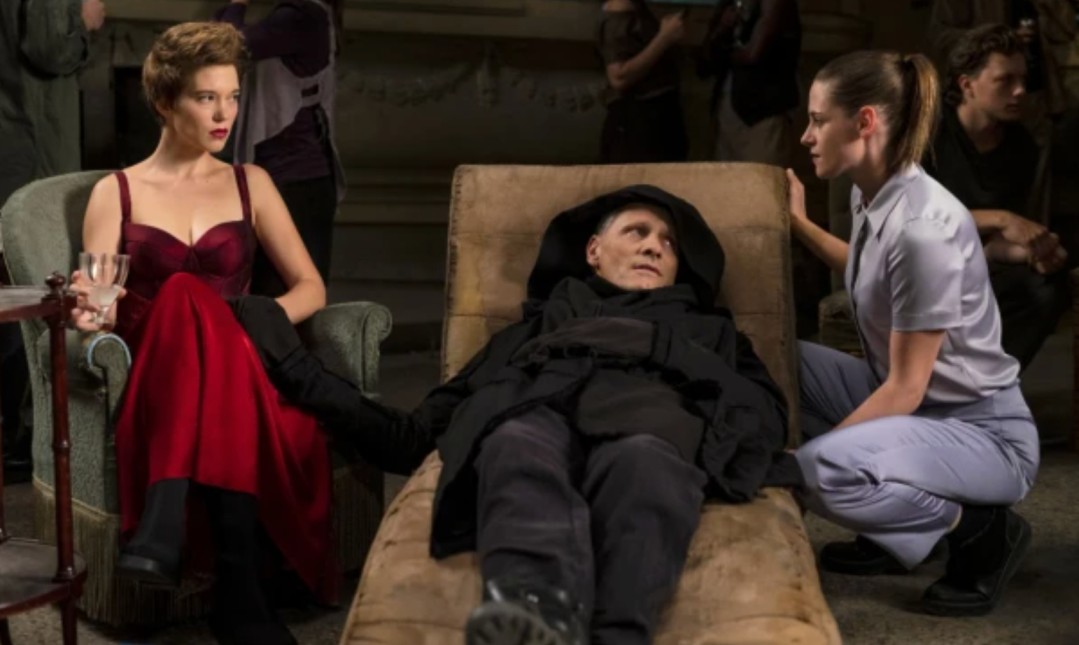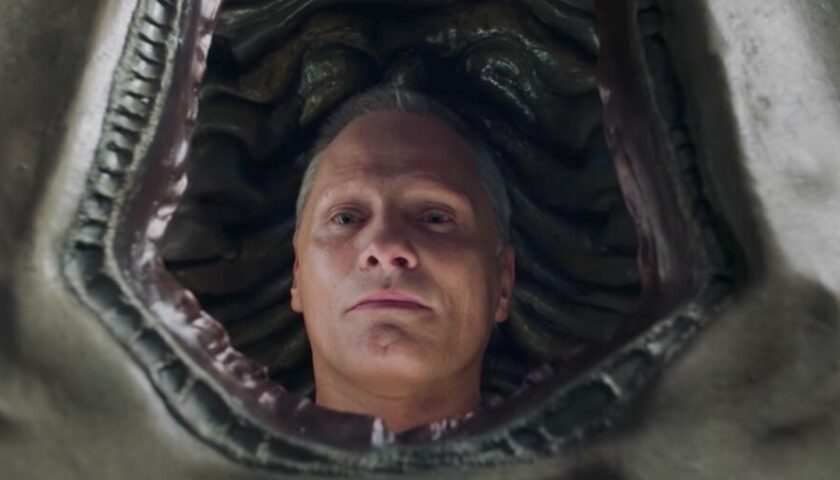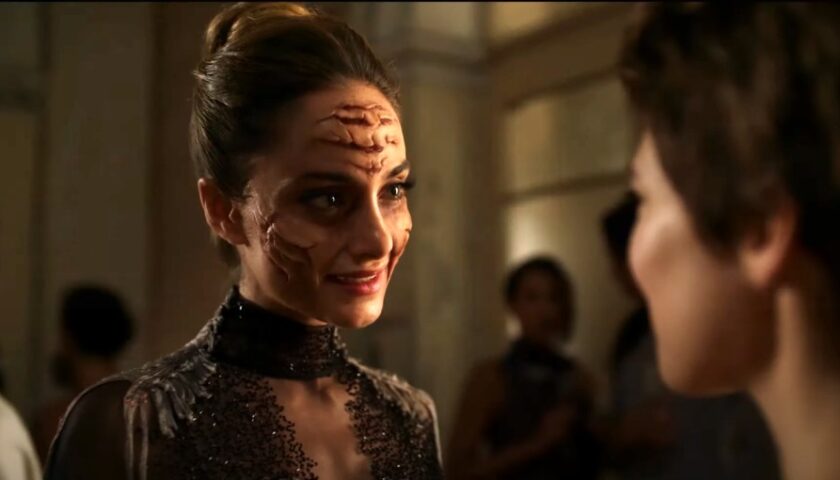“Crimes of the Future” (2022) – “Long live the new flesh.” – Max Renn (James Woods) in “Videodrome” (1983)
The aforementioned quote is from David Cronenberg’s trippy, sicko story about a renegade cable television station. Its president, Renn, falls into real-life channels of depravity and inexplicable, fantastical carnage, including an adversary inserting a VHS video tape into the man’s abdomen.
The year was 1983, and VHSs fast-forwarded into millions of American homes, and “Videodrome” played off that pop culture phenomenon.
Cronenberg, the king of body horror films, is back and reaches downward to his depraved roots – the glory and gory days of “The Brood” (1979), “Scanners” (1981), “The Fly” (1985), and “Naked Lunch” (1991), among others – to bring a new nightmare to the screen.
In “Crimes of the Future”, he looks ahead to a dystopian and depressing time. Most everyone in this movie lives or visits a decaying urban center, filmed on-location in Greece and on an apparent modest budget. Shabby rusted steel replaces bright neon signs, and offices and apartments are furnished with antiquated fixtures from cheap motels that operated during the Great Depression.
Before David and art directors Dimitris Katsikis and Kimberley Zaharko soak us with a gloomy, dismal setting, the film introduces a young boy (Sozos Sotiris) biting off, chewing, and swallowing pieces of a plastic bathroom garbage can. However, after watching this 107-minute movie, audiences will probably concur that Brecken (Sotiris) downing a receptacle – like it was a nacho chip – won’t even crack the top five most disturbing images in “Crimes of the Future”.
This Cronenberg fan rejoiced in experiencing his trademark of inexplicable blood and guts (primarily guts) and the apparatuses that carve the questionable deeds, including those used by Caprice (Lea Seydoux), who performs live surgeries on her partner Saul (Viggo Mortensen) for performance art via an otherworldly coffin called a SARK unit.
We also see random folks cutting each other up with various blades in clubs and city streets for oddly vain, decorative purposes, making a 2022 tattoo sleeve seem as tame as a Wednesday afternoon paper cut. Without question, David had his followers in mind for this bizarre journey, as layers of philosophical and societal concepts support the visual bloodletting.
The dangers and evolution of vanity, voyeurism, and toxic pollution appear – at least to this critic – as the underlying messages.
Not messages, but warnings, as the celluloid transmissions are sometimes clear but are frequently muddled, like our antagonists’ and protagonists’ moral compasses. When Caprice isn’t whittling into Saul’s flesh and exposing his innards for their paying customers or a pair of sidekicks aren’t using Black & Decker drills for nefarious purposes, we witness countless scenes of exposition, which dramatically slow the pacing. These conversational moments help give us clues into communal principles and the repercussions of today’s sins on tomorrow’s populous.
Cronenberg spins his morality tale through the dueling narratives of Caprice and Saul and a (primarily) silent stranger named Lang (Scott Speedman), who munches on candy bars with the frequency of a triathlete during a race.
Both stories are connected, and over 107 minutes, Caprice and Saul dance around their historical romantic relationship, but they usually square around his declining health. Mortensen – in a strong performance – appears terribly sick. He lets his gray locks fly. Cheers to the makeup team because Saul looks like he could bend over and upchuck anytime, day or night. His body is changing, and hence, the National Organ Registry becomes a necessary organization, run by a 50-something bureaucrat named Wippet (Don McKellar) and his uptight assistant, Timlin (Kristen Stewart). Yes, believe it or not, the National Organ Registry is a thing, like cargo shorts or Ryan Seacrest.
Meanwhile, Lang has grand motivations that hope to impact worldwide norms, while the ill Saul just tries to get through each day.
Cronenberg mixes everyday weirdness with a cloak and dagger plotline, and pushes forward unsettling concepts of science and biology through solemn, measured conversations and violently-disturbing, freakish practical effects. This twisted cinematic concoction has worked in the past and look to “The Brood”, “Scanners”, “Videodrome” as some essential examples.
“Crimes of the Future” isn’t as strong as the said classics. David tailors this tale for those with a lot of patience, but at 79 years young, Cronenberg has more innovative and distressing thoughts for the big screen.
For good measure, Renn’s famous line could’ve easily been this film’s official title. Yes, “Long live the new flesh.”
Indeed.
⭐⭐ 1/2 out of ⭐⭐⭐⭐
Written and directed by: David Cronenberg
Starring: Viggo Mortensen, Lea Seydoux, and Kristen Stewart
Runtime: 107 minutes
Rated: R
Image credits: NEON







